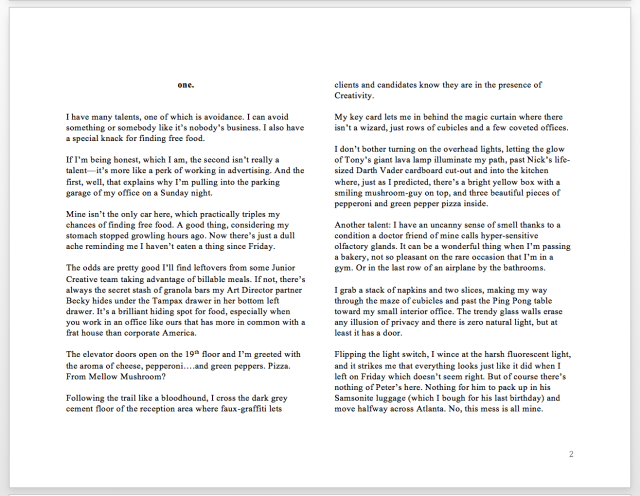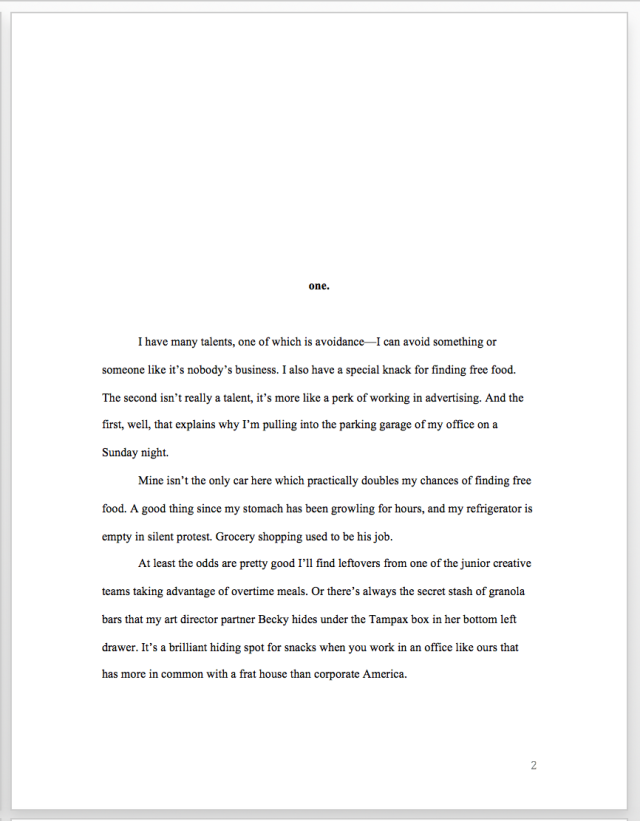Finishing my book, it turns out, was just the beginning.
As an unpublished, unagented author, I’m the last person who should be giving advice on what to do after finishing your manuscript. So don’t consider this advice—just one writer’s story from a finished draft to hopeful publication.
The first thing I learned is that format is really important. So important that if the most brilliantly written novel is submitted in the wrong format, no one will give it a second glance.
And mine was in the wrong format.
Perhaps a side-effect of 15+ years in advertising, my sentences tend to be short and my paragraphs even shorter. Plus, the art director on my shoulder kept whispering in my ear that the words should look nice on the page.
And my short-sentenced, short-paragraphed writing style just didn’t look right. So I got creative and put it into a two-column format on Microsoft Word. It looked great to me!

But then a friend told me that no manuscript in the history of manuscripts has ever been submitted successfully in this way. And since only 6% of the books written make it to publication, I didn’t want to risk getting shut out before the first sentence was even read.
So I went from the second draft to the third—formatted this time in the correct way.
If you google advice for properly formatting your manuscript like I did, you might find a few things here or there that are different, but of all the tips I’ve read, these seem to be pretty standard:
Font: 12-point, Times New Roman
Margins: 1” around all four sides
Spacing: double space, no extra lines between paragraphs. Use a single space between sentences, never a double space. (That’s also true in advertising, just ask any art director.)
Indent: 5 spaces (1 tab) for each new paragraph. Even the first paragraph of a new chapter. Again, no extra lines between paragraphs.
Chapters: Start on a fresh page, ⅓ the way down the page. Center the chapter title, skip a couple of spaces and then begin the text.
Align: Left aligned, not centered or justified.
Numbering: Start page numbering on the first page of text (not the title page)
Header: include your last name, title and page number on every page (except the title page)
The End: To signify the end, center a # or write ‘The End’
Now my first page looks like this:

Not nearly as pretty, if you ask me, but at least this one will hopefully make it past the slush pile.

You go girl!
LikeLike
It’s like you read my current angst – and then decided to post a blog to help out. Thanks!
LikeLike
Pingback: WORD COUNT: THE MATH OF WRITING | @ThisHammer
Pingback: Writing a Romance Novel: Steps 1-6 - The Lovely Blogger Girl